Plastic pipes are essential to modern infrastructure—delivering water, managing wastewater, and protecting utilities. Manufactured from highly stable engineered polymers, they are designed to last over 100 years. Unlike single-use plastics, their durability is a major strength, making them ideal for long-term use in buildings and infrastructure. Resistant to corrosion and degradation, plastic pipes perform reliably over time, ensuring safe, efficient service well into the future.


Plastic pipes are designed to last for decades, even generations, and rely on engineered polymers that are exceptionally stable and durable. Unlike single-use plastics such as packaging, which are designed for convenience and short lifespans, infrastructure plastics are purpose-built for long-term performance. Their longevity, often exceeding 100 years, makes them the ideal choice for critical infrastructure.
Some types of plastic materials are highly durable and rugged. Unlike commodity plastics, engineered polymers are specifically designed with tailored molecular structures that provide strength, toughness, chemical and UV resistance, and ease of processing—making them ideal for long-life applications.
The long-term strength of plastic pipes is rigorously tested following international standards. Specifically, ISO 9080 outlines the method for determining the long-term hydrostatic strength of thermoplastic pipe materials through extrapolation, ensuring reliability over extended service lives.
The preface of Australian Standard AS/NZS 1260:2017 states: “Plastics pipe systems are often designed based on 50 years of extrapolated test data. This established international practice does not imply that the service life of drainage pipes is limited to 50 years. For currently manufactured and installed systems, the actual service life cannot be precisely predicted but can logically be expected to exceed 100 years before major rehabilitation is required.”
Continual research and innovation keep confirming the strength, durability, and long-lasting performance of plastic pipe systems.
Built to Last: Plastic pipes are designed for long-term use in critical infrastructure like water supply, sewerage, and drainage—often buried underground.
Service Life Over 100 Years: Pipes typically last a century or more before needing replacement or rehabilitation.
Trenchless Rehabilitation: At end-of-life, pipes can serve as host pipes for trenchless rehabilitation using new plastic systems, extending their lifespan.
Minimal Landfill Waste: Plastic pipes make up a very small fraction of landfill waste—less than 3% in large construction and demolition audits—due to their durability and longevity.
100% Recyclable: Made from thermoplastics like PVC and PE, plastic pipes are fully recyclable. Manufacturing scrap is routinely reprocessed and reused.
Supports Circular Economy: Plastic pipes align with circular economy principles by design, reducing raw material consumption and waste, enabling repair, reuse, recycling, and extended service life.
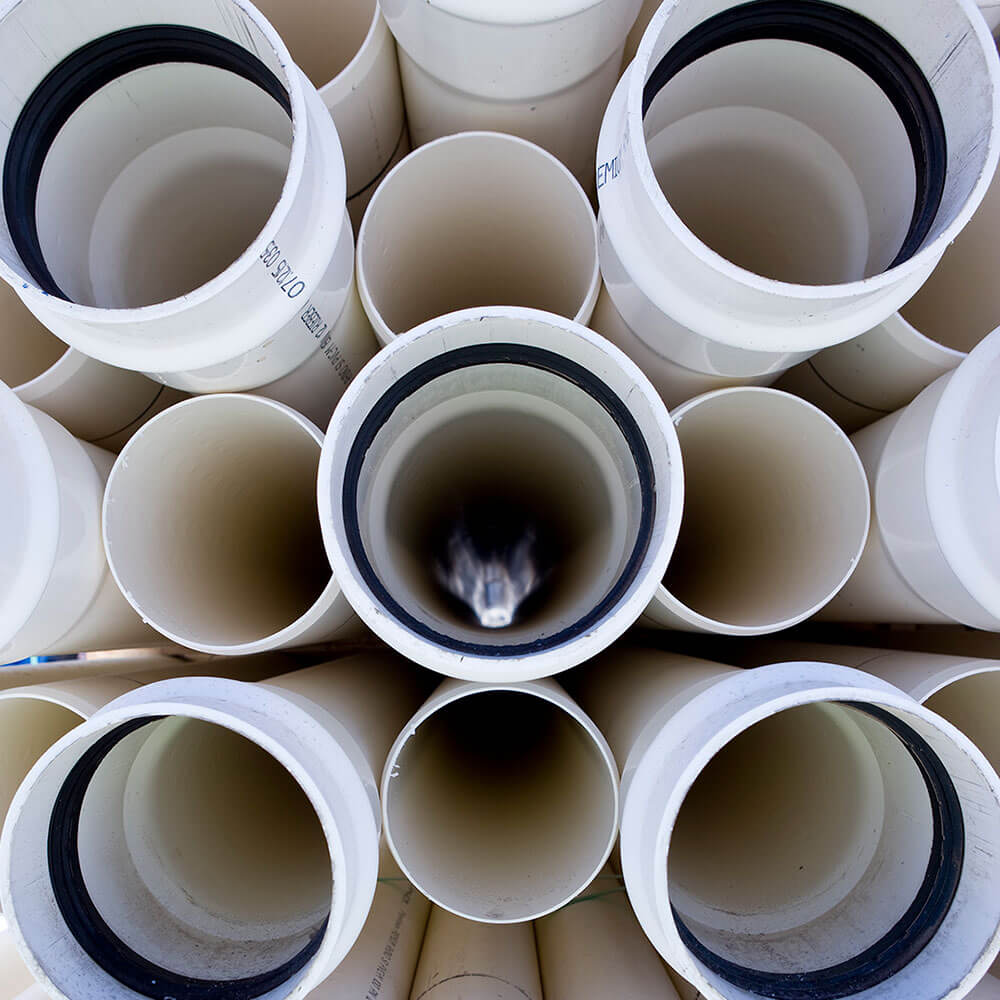

The vast majority of plastic pipes are made from a single material and therefore easier to recycle.
In simple terms it means they can be cut up, remelted and reformed into another shape or new product and hence easily reprocessed and recycled.

An economical and versatile thermoplastic polymer, derived from vinyl chloride monomer – a chlorinated hydrocarbon.
PVC is 57% chlorine by mass which is sourced from the abundant natural resource – common salt.

A tough, rigid and crystalline thermoplastic polymer produced via chain-growth polymerisation from the monomer propylene. It is the second most widely produced commodity plastic after polyethylene.
There are three main grades of polypropylene resin allowing for changes in specific properties as determined by the composition of the polymer chain.
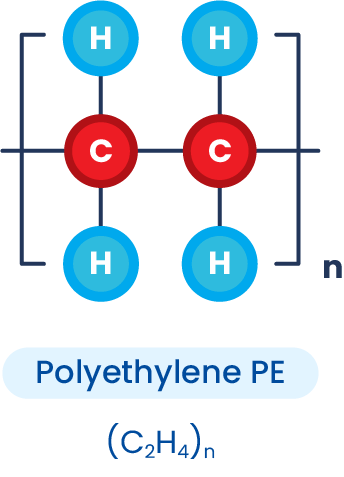
Is the world’s most widely used thermoplastic polymer and is produced by the polymerisation of ethylene gas, a derivative of the petroleum industry. The polymer consists essentially of long-chain molecules of very high molecular weight, made up of many thousands of the -CH2- repeating unit.
There are many different types of polyethylene for example:
Modern day polyethylene pressure pipes for conveyance of water or gas are made from a type of HDPE called PE100.

Why is flexible packaging difficult to recycle?
Flexible packaging is more challenging to recover as it often involves multiple polymer layers/and or aluminium, which are difficult to separate adding complication to the recycling process, unlike most pipes which are made from one single material.
Why is it important to separate plastic materials in recycling?
This ensures each material can be processed in the appropriate way, avoiding contamination resulting in an individual material that can be reused to make new products.

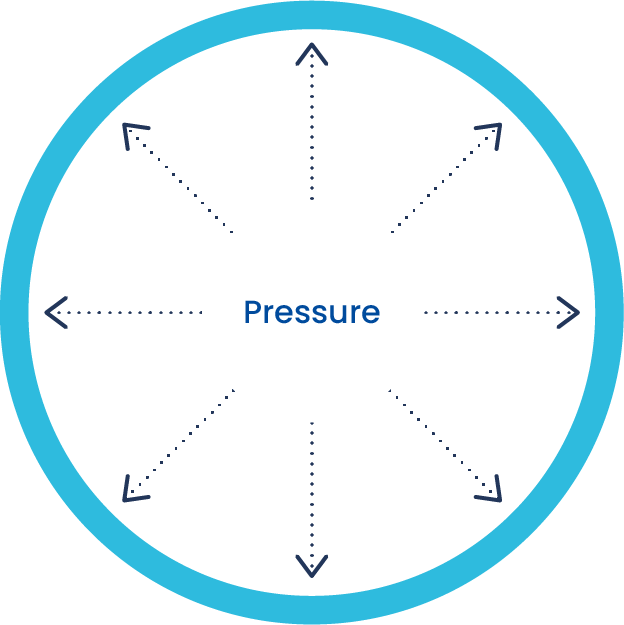
Pressure pipes are engineered to handle the internal forces generated by the fluid they carry, which create both longitudinal and hoop stresses within the pipe wall.
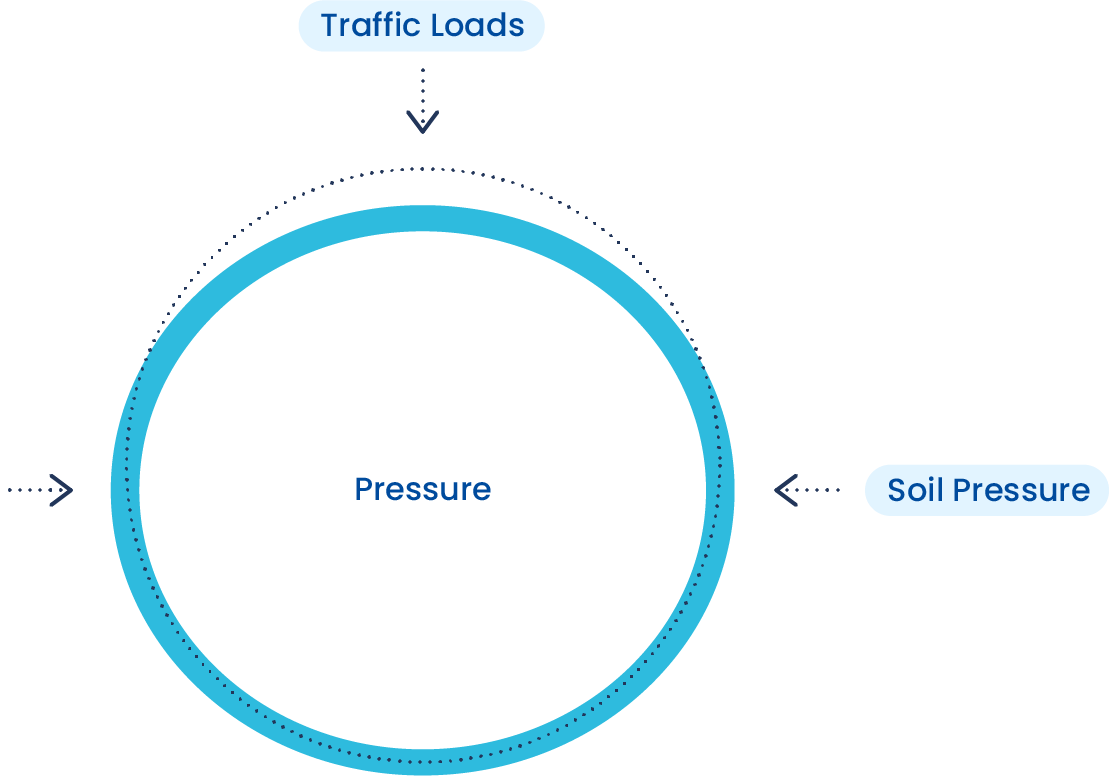
Buried pipes are subjected to external loads from installation, soil, and traffic. Over time, these stresses gradually relax as the loads are transferred into the surrounding soil, stabilising pipe deflection. When pipes are internally pressurised, additional external stresses do not shorten their service life. In fact, the visco-elastic behaviours of materials like PE and PVC are a beneficial feature, contributing to the long life of thermoplastic pressure pipes.
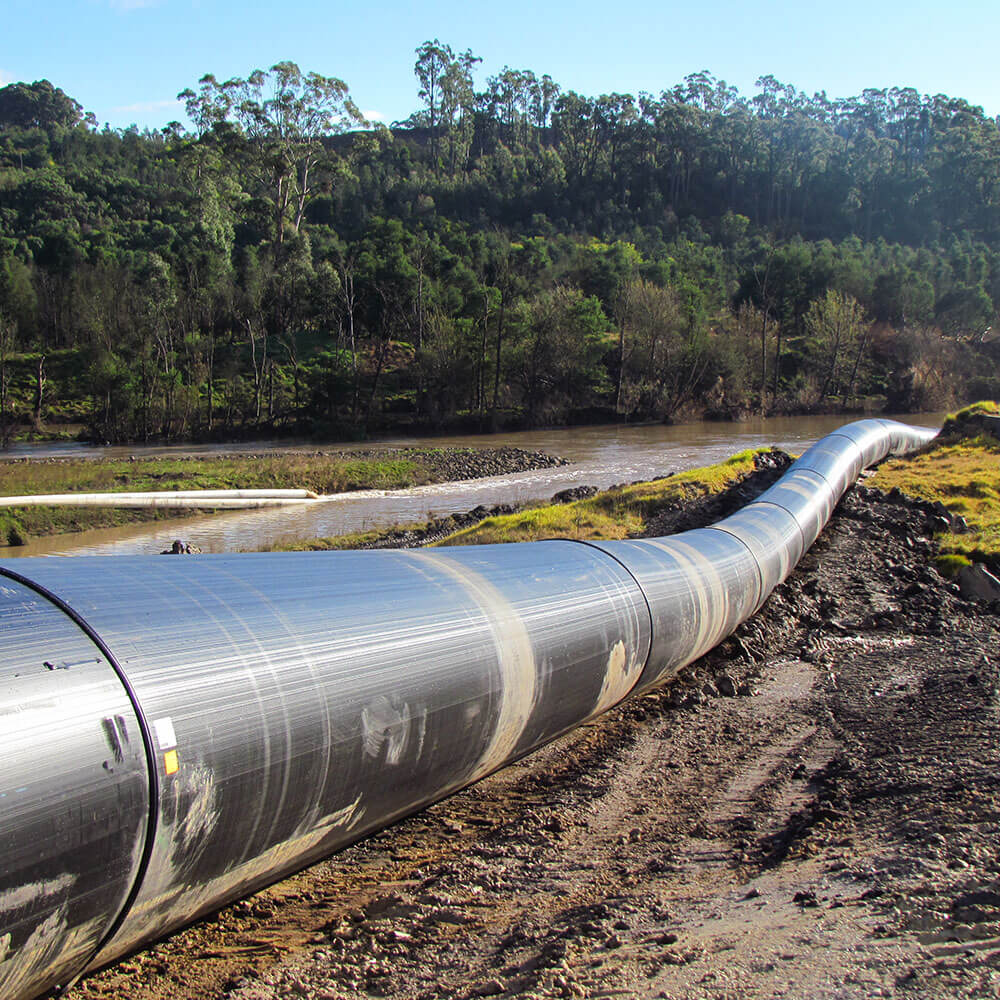
Durability means a product can keep doing its job for its entire design life, when used in its normal operation without constant maintenance or repair.
With plastic pipes, the goal is to design and install them correctly so they can sit (often behind walls or underground) and do their job for decades without needing attention.
They’re designed for long life: able to handle the forces they face, immune to corrosion, and resistant to chemical attack. They stand up to abrasion, maintain a smooth inner surface for easy fluid flow, and are designed not to leach unwanted materials into the water – a must for safe drinking water systems.
PVC pipes were first introduced in Europe in the 1950s and arrived in Australia in 1960. Production began with conduits, followed by pressure pipes, and later sewer and drainage systems. Over the years, several studies have been conducted to determine if there is any change in the product properties over time.

Long term performance of PVC pressure pipes in a large rural water supply scheme – Stahmer & Whittle

Australian Plastic pipe manufactures have their products independently certified, ensuring they meet high performance standards.
There are over
70
Australian Standards relating to plastic pipes and fittings.
These standards cover all aspects from manufacturing, product specifications, other materials used in plastic pipeline systems, testing through to quality management systems